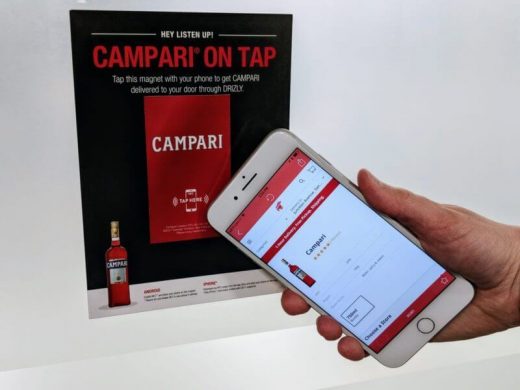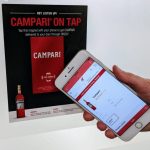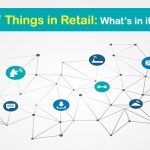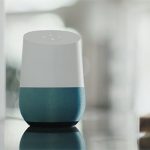Thinfilm’s NFC-enabled magnets let Campari customers reorder from their fridge
NFC is a better marketing bet than QRs and tech like the Amazon Dash button, the company says.
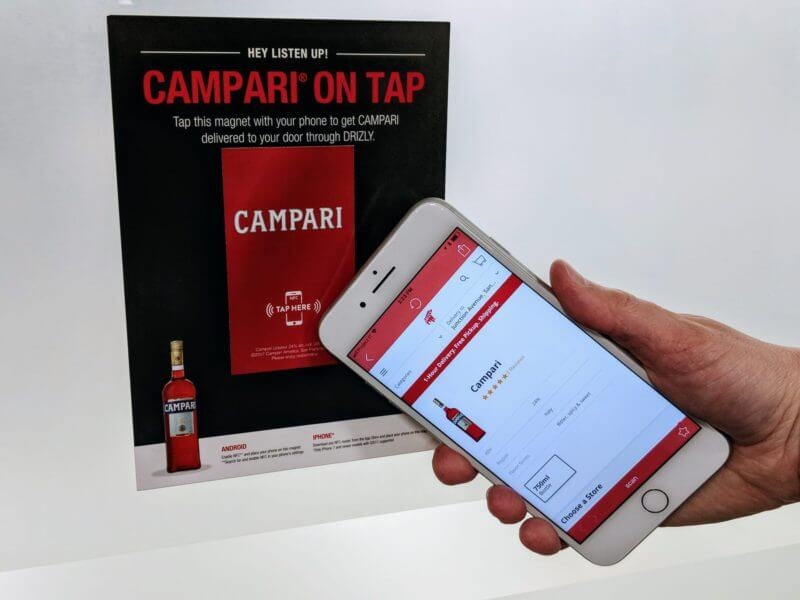
Flat, thin and flexible, with no need for batteries — NFC is taking its place within the Internet of Things (IoT) to give brands a new way to interact with their customers
Near-field communication (NFC) is just what it sounds like: transactional communication between two electronic devices in close proximity to each other. All iPhones version six and up and most recent Androids are NFC-ready, meaning that tapping or bringing the device close to an NFC-enabled transmitter can trigger an interaction.
I spoke with Thinfilm’s senior director of technical marketing, Matthew Bright, after its recent New York-area launch of NFC-enabled refrigerator magnets for the Campari liquor brands. We talked about the magnet launch and what’s next for NFC. He also shared his thoughts about how NFC is better for marketers and consumers than QR and technologies like the Amazon Dash button.
Commerce anywhere
“This is really kind of the next generation of what we call a ‘commerce everywhere’ solution,” Bright told me. “The idea is really that it’s possible now for brands using the right technology to make any place a location of commerce.”
Simple, branded refrigerator magnets without NFC are a marketing mainstay, reminding customers to buy the product. Add NFC-enabled ordering, and you have a complete shopping experience.
The process is relatively simple, assuming you have an Android phone or an NFC app loaded up on your iPhone. Tap your device on a Campari brand Skyy Vodka magnet and you are immediately sent to local delivery service Drizly already cued up to the mobile site’s ordering page, and within your account if you are a registered member.
“This becomes a very fast, very convenient, very easy to use way of connecting the consumer, to a brand or to a designated resale partner,” Bright said. “In the case of the Campari magnet, once the consumer has acquired the magnet, there’s no setup, there’s no installation, and there’s no hassle. Essentially they can put it straight on their fridge and then they can just tap it.”
Bright said that refrigerator magnets are just one example and that they’ve also used NFC technology in packaging and labels.
NFC vs. QR
Bright outlined a number of reasons that a marketer might choose NFC technology over a Quick Response (QR) code, which can deliver a similar experience. Camera-based tech requires good lighting, clear focus and visual alignment. NFC, just a tap. He also said that devices take longer to read QRs, sometimes up to 40 percent longer.
Brands have more creative control branding with Thinfilm, and QRs are not product-specific, which “becomes extremely important when you’re dealing with vertical markets such as cosmetics or pharmaceuticals where expiration dates and ‘best by’ dates are particularly important or in the case where you may have a safety recall associated only with a particular batch of product,” Bright said.
Bright also touts the advantages of NFC over technology like the Amazon Dash button and voice assistants, saying that those technologies require a set-up and have a much higher potential for user error.
I asked him if NFC posed any privacy issues.
“Privacy is an area where NFC has an advantage over long-range technologies because the technology is essentially designed in a way where it’s created a one-to-one connection between a product and a tag on a user’s smartphone,” Bright said adding that the short-range makes it very private. He said that since the user initiates the interaction, consent is implied.
The future is brand loyalty
Bright believes that NFC ultimately will help to build meaningful long-term relationships between consumers and brands.
“You can continue that cycle of commerce from order to delivery to reorder with a minimal amount of friction. That’s particularly important in this environment where a brand, more than ever, needs to have a direct connection to their consumers in order to share their differentiation and in order to build a long-term relationship that fosters loyalty,” Bright said.
Marketing Land – Internet Marketing News, Strategies & Tips
(52)

